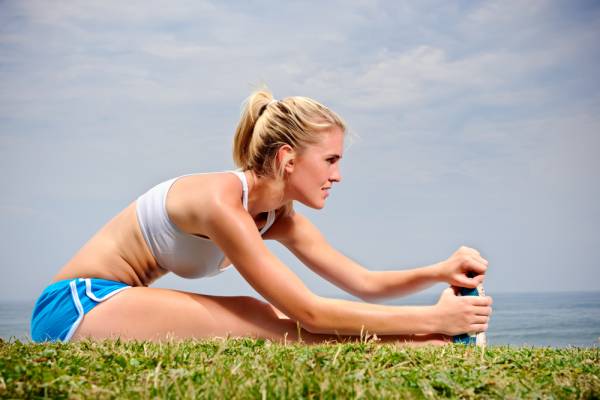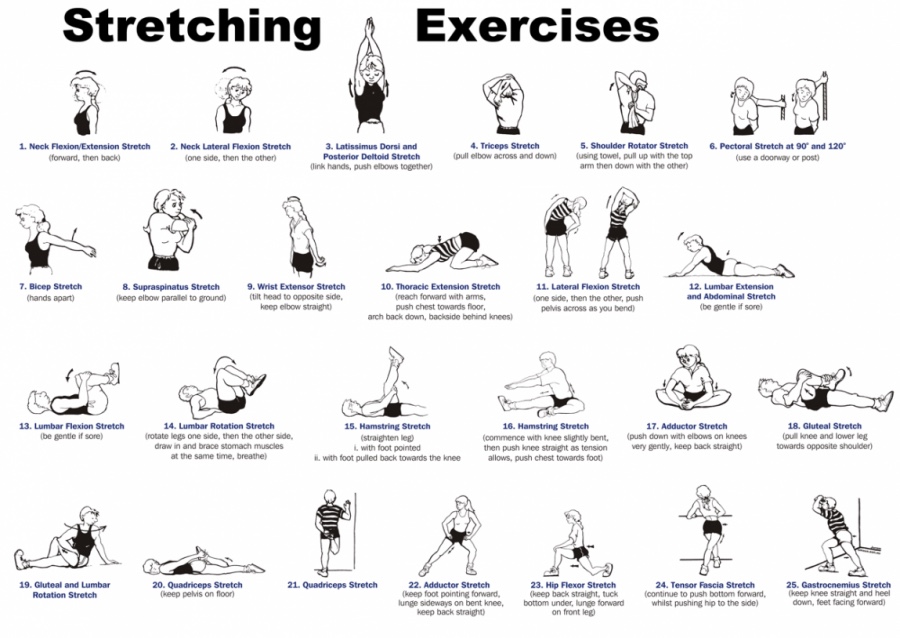Static flexibility training refers to the use of static, isometric stretches used to increase a joint’s range of motion/movement. Static stretching improves joint range of motion, increasing flexibility, which can improve performance. The American College of Sports Medicine states:
With a static stretch, the position in which a slight stretch is felt should be held 15-30 seconds, and each stretch should be repeated 3-5 times on each side of the body.[1]
The main safety precaution in static stretching is that pain should not be felt, and the joint should not be taken beyond the normal range of motion.
Static stretching works by turning off the stretch reflex, which causes muscular contraction when a muscle is lengthened at speed. This then allows the muscle to be stretched, or lengthened. Repeated and frequent exposure to muscular lengthening causes the body to adapt, by increasing the muscle length.
Static stretching will also increase the joint range of motion by stretching ligaments and tendons around the joint. The stretching of ligaments helps increase the elastic properties of the tissue, allowing for greater range of motion.
Static stretching can increase or be used to maintain joint range of motion. Remember flexibility is joint specific, so a well rounded approach will focus on multiple joints.
A good range of motion and sound flexibility helps to improve performance by:
- preventing injury
- allowing more fluid and coordinated movements
- improves biomechanical efficiency
Sports that benefit from static stretching include: gymnastics, dance, figure skating, synchronised swimming and other sports where poses may be held that require good range of motion. Benefits will also transfer into sports such as: football, ice-hockey, AFL, netball, basketball, and cricket.
This content is covered in less detail in Factors Affecting Performance, How does training affect performance?, types of training and training methods, flexibility training.
Further reading on static stretching
[1] A. Lynn Millar (2012) Improving Your Flexibility and Balance. Accessed at https://www.acsm.org/public-information/articles/2012/02/02/improving-your-flexibility-and-balance on 20 January 2016.
http://www.stretching-exercises-guide.com/static-stretches.html
https://www.betterhealth.vic.gov.au/health/tentips/10-tips-for-safe-stretching


